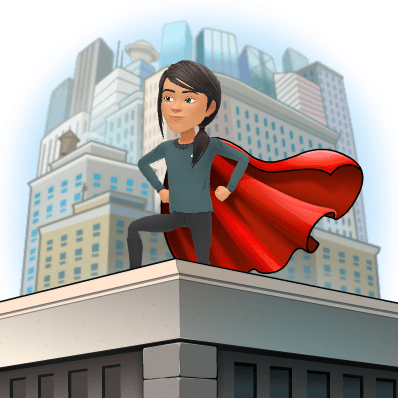Storytelling is a powerful way to captivate people.
"Good speakers are great storytellers" is a phrase I say to my students at least once a week. Stories build suspense, foster creativity, and encourage us to connect ideas and each other. Find a way to create anticipation for a lesson or a concept. This past week, we started our final unit - special occasion speaking.
I always begin the unit by sharing stories from weddings I have attended, highlighting the best and worst wedding toasts I have witnessed. Jokes about the thirty-minute best man toast that involved bathroom breaks and a hall full of hungry guests to uncomfortably sit through childhood stories of the groom and his brother remind them that our speaking skills can and will be put to the test in numerous ways throughout our lives. My stories help them to recognize the connection between content and their lives. We can all leverage our stories and experiences to captivate our students and help them understand the greater context of what we are learning together.
Keep students active.
The spring is full of distractions. Alternative schedules, field trips, and end-of-year experiences are at the forefront of students' minds. When students actively engage in the learning process, they are less likely to be consumed by distractions. Collaborative projects that promote creativity and creation can help students master skills while also having fun.
One of my favorite assignments is a nonverbal video project in which students tell a story that relates to high school students without using words. This week students asked if they could incorporate videos into their final special occasion speeches. We went down a rabbit hole of TikToks and Reels that represented their high school experiences and related to the themes of their final speeches. Instead of scolding them for embracing their distractions, I found a way to tie their videos into their speeches by looking for themes and discussing how these videos communicate their values and beliefs.
Utilize technology to amplify their voices.
Distractions can be opportunities to redirect. They can also become part of the curriculum that keeps students engaged and actively using their interests to demonstrate mastery. Having students make videos encourages them to share what they're learning on a larger scale. Using their platforms, they are more inclined to share the fun, which turns lessons into flashbulb memories that they will take with them beyond the classroom walls.
Be ready to change course.
I am *that* teacher who plans the entire semester before it begins. I am comforted by a road map that helps me prepare for heavy grading weekends and allows me to understand my units' interconnectedness. While having a plan is valuable, I acknowledge and am always ready to shift course. Some days are rough, and a lesson needs to be retooled. Certain groups of students move faster or slower depending on their skill sets and strengths. As teachers, having a vision for the journey we want our students to take in our classrooms helps us to adjust our strategies to meet the needs of our students. We must be ready to rethink, retool, and revise to meet those needs.
The final few weeks fly faster than we can blink. While our attention spans may be swimming away during the last few weeks, we can keep our students engaged by inviting our students to be active in the learning process and co-creating powerful stories and memories together.
Stutsman, Lori. “You Have Eight Seconds. Differentiate Your Business through the Art of Storytelling.” You Have Eight Seconds: Differentiate Your Business Through the Art of Storytelling, Microsoft Corporation, 15 Nov. 2021, https://www.microsoft.com/en-us/us-partner-blog/2021/11/15/you-have-eight-seconds-differentiate-your-business-through-the-art-of-storytelling/.
.png)

.jpg)






.gif)





.jpeg)









